 Bill watching the clouds build
Bill watching the clouds build
I alluded to this story back in the summer, but was so busy then I couldn’t take time to tell it. Roger Rodibaugh recently reminded me that he and a few other folks have been waiting quite patiently to hear it. Actually, several adventures from last summer slipped by unaccounted for that I should revisit. Now, with it cold and snowy outside, seems a good time to get back to them.
I’m calling this “Capsize No. 1” because I know it won’t be the last. I tend to stretch my luck, decline to follow my own advice, etc., etc., so it’s pretty much a foregone conclusion there will be more. While I don’t invite trouble, I’m always curious to see what it will do when it arrives, and linger longer than a wiser man would.
I also seem to have an innate propensity for taking good friends on their very first sail – ever – and turning them over in the middle of large bodies of water in big storms. It’s a reputation I have not cultivated intentionally, I assure you. It just seems to be working out that way. Somehow, they manage to not only forgive me, but ask to go sailing again. Not sure if that says more about them, or me.
Back in college, it was my new friend and soon-to-be house mate, Scott “Catman” Forrey who got the special initiation. That was a doozy, and I’ll tell that one here, too, at some point.
This time, though, it was my fishing and poker buddy, Bill Ford.
Bill has led an interesting life. He has a quiet, calm demeanor, very hard to agitate. He’s been a farm manager on a large Virginia cattle ranch, an accountant (for a company that was later busted by the Feds), and foreman on a number of big construction projects, among other things. One of his sons worked for an NGO deep in Africa, and Bill and his wife have travelled there many times, to Madagascar, Zanzibar, Malawi, Kenya, and Tanzania, often as the only white folks visible for days. Maybe for a guy who has swum with crocodiles, turning over a little boat in a thunderstorm isn’t such a big deal?
Bill had never been sailing. Even so, he followed the progress on the Melonseeds during construction with great interest, and came by to help now and then, sometimes bringing other woodworkers along for a visit. I’ve been promising him a trip for quite some time.
Sail track
This Saturday in July was hot and still and steamy – classic Southern Summer stuff, with the air thick and damp, cicadas buzzing incessantly. At the landing on the Chickahominy, we found a pro bass fishing tournament underway. It’s a favored spot for pro events: easy access to both the James and the Chick, fishing is always good, and trophy size fish are common. A beer truck under the trees was blaring country music. A gear sponsor, flanked by a pair of wilted booth babes, was hawking lures at a table in the shade. A few guys had caught their limit already, weighed in, and were milling about waiting for the results. Most of the boats were still out on the water, though, so the ramp was clear. Bill thought he might try his hand at fishing, too, so tossed his rod and box in the boat.
There was no wind, only humidity. There’s a weather buoy anchored in the James off Jamestown about 7 miles away. I pulled it up on the phone and saw that even out in open water the wind barely registered between 0 and 5 knots all morning, and it was coming out of the southeast, the direction we wanted to go. There was nothing on the radar. Seemed like a good day to use the topsail, so up it went. We shoved off and rowed slowly down the creek.
Out in the Chick, we picked up a little breeze. There wasn’t much of it, but it was steady, and the tide was with us. In a few hours we’d have the tide and wind behind us for the return trip. Perfect. We glided easily under the new Judith Stewart Dresser bridge and out the mouth of the Chickahominy where it meets the mighty James, three miles wide.
Sailing was easy. The topsail caught enough breeze to keep us moving along smoothly, and we tacked out into the main stem of the river without any trouble. Even though it was over 90 degrees the water was pleasant.
It just didn’t feel right, though. The air had that twitchy glimmer that makes things in the distance look grimy and ill-tempered. The clouds were low and confused, and the horizon to the west looked blue and bruised. I told Bill I thought we should head up river, rather than cross to the other side as we’d planned. We could cruise along the shore on the way back. There was more interesting stuff to see there, and if something blew up on us we’d be close to shore if we had to run for it. He agreed. I had also seen a chart of the river, and I knew the water in that whole wide bay was only a few feet deep. This was the only thing I did right all day.
By the time we reached the shore there was lightning flashing in that small, blue bruise across the river. It was a long way off still, and isolated, but coming our way. We poked around the edges of a cypress swamp, and into Tomahund Creek where a pair of those fishermen were working the shallows hard from their sparkly over-powered bass boat. We left them and started heading back in earnest.
We heard thunder. I suggested maybe we should pull up on the shore and wait it out, but Bill was not enamored with the prospect of huddling under the trees in a lightning storm. Some of the Cypress standing out in the water, loners, had clearly been blasted asunder by strikes in the past. We opted to hug the bank and continue to work our way back along the shore. The tall trees now blocked our view to the west, though, where the bad stuff was coming from. And the wind had died altogether.
More lightning. Then rain. Then it stopped. It looked like the storm was splitting up and going around us.
 Radar at 2pm, already 20 minutes after the strike. Notice the change in wind flags.
Radar at 2pm, already 20 minutes after the strike. Notice the change in wind flags.
We moved away from the shore a bit, enough to go around a series of long piers. The air was eerily still and quiet. A flock of geese paddled ahead of us. Then it got very dark, very fast. The two guys in the bass boat suddenly came roaring past, going about 40 miles an hour, hell bent for leather. I said, dang I wonder what spooked them? Bill looked behind us and his face went white. I turned around and saw a vertical squall line, like a grey wall of concrete, charging down the river toward us, only a short distance away and closing fast.
There was no time to round up. We had all the sails up, rigged loose for light air.
It hit us like a hammer out of the west, square on the stern. We started flying down river. Caesura was galloping like a runaway horse, water shooting out from the bow in both directions. Bill held on to the coaming with both hands and kept yelling “Are we OK?” He did this six times in less than a minute. Imagine two guys going insanely fast downhill on a tobogan, with fresh snow flying up in rooster tails all around, and you’ll have a pretty good idea of what it was like.
All I could do was hang on and try to keep us from broaching. I briefly thought about letting the sheet go, letting the sail fly out ahead of us like a flag, but I’d never done that and didn’t know how the boat would behave or how I’d get the sheet back if I did. What then? There wasn’t time to give it a second thought. The whole thing took maybe a minute and a half.
Click for the Radar Loop spanning less than an hour, Caesura’s location in the center
The storm had exploded from nothing but a bad mood to a full rage in less than thirty minutes, and was moving fast. As it passed to our port side, the wind clocked around 180 degrees and caught the sails on the back side, jibing the whole rig over violently. The sails filled again, and the boat tried hard to hold itself upright, but the change was so sudden that Bill and I couldn’t move fast enough. With both of us now sitting on the leeward rail, and the sails full and straining, it was too much, and over we went, about 100 yards from shore. This part took about three seconds – much longer to tell it than it took to happen.
The Jamestown weather buoy recorded the dramatic
shifts in wind direction when the storm hit at 1:30 pm.
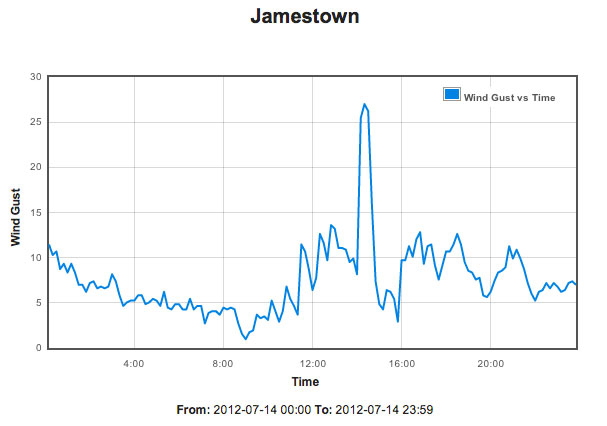 Big wind gust in the storm, lasted a half hour. The buoy, about 5 miles away,
Big wind gust in the storm, lasted a half hour. The buoy, about 5 miles away,
well beyond the center of storm, registered the gust at around 27 knots.
I was surprised at how high Caesura floated on her side. Maybe 8 inches of hull was underwater, resting at the level of the inner coaming. That was a relief. I was also surprised I had not made use of all those wonderful copper-lined tie-in spots I had gone to such trouble to install, as I watched cushions, flip-flops, and various other bits of gear floating away across the water downwind.
There was also that bag of expensive electronics that I had so carefully packed – iPhone in a ziplock bag, waterproof GPS, batteries, lights, etc. – and then not bothered to tie into the boat, either. It sank promptly, just out of reach. The waterproof camera, however, was still in my pocket.
Bill, despite his lack of experience in such things, instinctively grabbed a cushion as soon as the boat went over. He was hugging it tight to his chest like he was trying to drown the poor thing, sputtering and kick-swimming around the boat, not realizing the water was only hip deep. For some reason, this seemed exceedingly funny and, despite all the things I now had to worry about, I couldn’t stop laughing.
I said “Bill, stop swimming and stand up. Help me get this boat turned over.”
“Wait, you’re standing up?”
“Yeah, it’s really shallow here.”
“Oh, okay.”
We unstepped the mast and flipped the hull, then tossed the rig, and anything else we could grab, into the boat.
Even though the water was shallow, and worst of the storm had passed, we were not completely out of trouble. There was still lightning popping off all around us. The temperature had suddenly dropped twenty degrees, too, so it was actually chilly. And the current was pretty strong. We tried for a sand beach on one side of a long pier, nestled between long walls of jagged stone riprap, but couldn’t make any headway against both wind and tide. Even with only six inches of water in the boat it was incredibly heavy. We spotted a small bit of sand at the end of the point and aimed for that.
Bill said “Look, it’s an angel. A pink angel.”
A woman in a hooded fuschia raincoat came running down the pier. The wind caught her umbrella, turned it inside out, and tore half of it away. She stood on the planks and shouted, asking if we needed help. We asked if we could pull up on her beach. She said “Of course, and come up to the house until it blows over!” She continued to come out and check on us until we had everything safely pulled up on the bank.
We had a wonderful visit on their porch. Turned out the house was owned by the Dressers. Judith Dresser had lobbied the state tirelessly for a tall bridge when they made plans to tear down the old drawbridge and replace it with a low fixed one. That cheaper bridge would have blocked all boat access to the Chickahominy. She got her bridge, a nice tall one, with a pedestrian bike lane across thrown in for good measure. When she died before it was finished, they named the bridge for her. We owe our ability to sail out of one of my favorite spots to her, and here we were wet but snug, eating fruit and sipping drinks on her porch. Mr. Dresser had remarried, and it was his new wife, the angel in pink, who had come out and waved us in.
The Dressers let us borrow a phone, and we called our wives to let them know we’d be late, and why, but we were OK.
Bill and I took inventory of everything we’d lost. His fishing rod and tackle box were gone, his wallet and cellphone in the box. My bag of electronics, of course, my wallet (thoughtfully sealed in a ziplock bag) inside that with $100 in cash, and a number of other small floaty things. Still, both we and the boat were unhurt. Bill began to mourn the loss of his phone and tackle box, and I my own gear as I calculated what it would cost to replace it all. I suggested we go out and have a look.
As luck would have it, we walked out on the pier just as his tackle box was floating by, half submerged, and the rod tip poking up out of the water beside it. No sign of my bag. I waded around in the water for a while, shuffling my feet, but came up empty.
We bailed the boat out, loaded up again, thanked our guests, and had a pleasant row the mile back to the ramp on a calm river, in the fading afternoon light.
As we drove home, I remembered my phone was actually on and safely in a waterproof bag. The five year old Garmin GPS was getting flakey, shutting itself down randomly several times a day, so that was no big loss, but the phone was almost new. I kept a homing app installed on the phone that used GPS for tracking, and, if the battery lasted long enough, I realized I might be able to use my laptop or another phone to see exactly where it was, maybe even be able to find it, and with it the rest of the bag.
But no such luck. It was just deep enough that no signal came through. Nevertheless, Terri and the girls took great delight in calling my phone at the bottom of the river, hearing my voice recording, leaving me messages, sending me texts, until the battery ran out.
A few days later, Bill’s phone dried out and started working again. Since I had the waterproof camera in my pocket, I did come away with some pictures and video. You’ll see glimpses of how nicely the topsail sets. You’ll also see the brief rain that fell. And finally, the looming darkness moments before the storm hit. Needless to say, I did not have a free hand for snapping pix after that.
Hindsight is over-rated, in my opinion, because you would never know then what you know now. It’s ridiculous to think so. However, there are some very basic things I relearned, and will keep in mind going forward:
- Tie everything in the boat, even when I don’t think I need to, dummy.
- If there’s a chance of getting caught in a storm, assume we will, and plan accordingly.
- Practice letting the sheet go under different conditions, see what happens, so I’ll know when to use that option.
- At first sign of trouble, take down extra canvas (topsail) and flatten the main.
- Try turning the boat over in a pond and see what it’s like to climb in and bail it out. Imagine doing it with 2 to 3 foot waves and wind whipping about during the process, and keep that thought in mind later when making other decisions. (I have always planned to do this, just haven’t yet.)
I was glad we chose to stay close to shore. That was a good call. A better one might have been to follow my first instinct and pull up on the bank to wait it out, but we had no idea how long that would be. While lightning is scary, and the danger is real, the odds of getting struck are pretty dang slim compared to more immediate dangers. Maybe take the whole sail rig down, stuff it in the boat, and row back along the shore? There was almost no wind, anyway, until there was too much. Caught far from shore, that might be the best option.
In most scenarios I can imagine, capsizing there close to the bank in shallow water was a better option than not. At least there, we could stand up and drag the boat in. If I had shortened sail, or let fly the sheet and not capsized, we would have blown downwind into deep, wide open water, with little control over what happened next. Without knowing how bad the storm would get, or how long it would last, that scenario has some pretty unpleasant ways of playing out. Big water, big waves, big wind, darkness maybe coming on before we got things sorted out . . . yuck, no thanks. Ditching next to shore seems pretty darn good, by comparison.
Not sure what would have happened if we’d managed to round up and take that much wind on the nose with all the sail up. Surely we would have slipped backward fast, and struggled with the rudder working in reverse to try and keep from going broadside, and to keep the sails from filling with all that wind. Pretty harrowing, nigh impossible, but we might have been able to ride it out. Something else to practice.
For you techie weather nerds, the radar loops, history, and some of these pictures came by way of a great little weather application put out by NOAA. It’s called the NOAA_Weather_and_Climate_Toolkit, a Java Runtime app that runs on Macs, PCs and Unix. With it, you can search and download decades of data from any weather station, display it graphically, and export single frames or movies in all sorts of formats. WeatherUnderground, one of my favorite weather sites, has a similar feature, only archives the radar data at the rate of one frame per hour for anything over 30 days old. The NOAA app let’s you pull everything, with hundreds of different data types. Very cool.



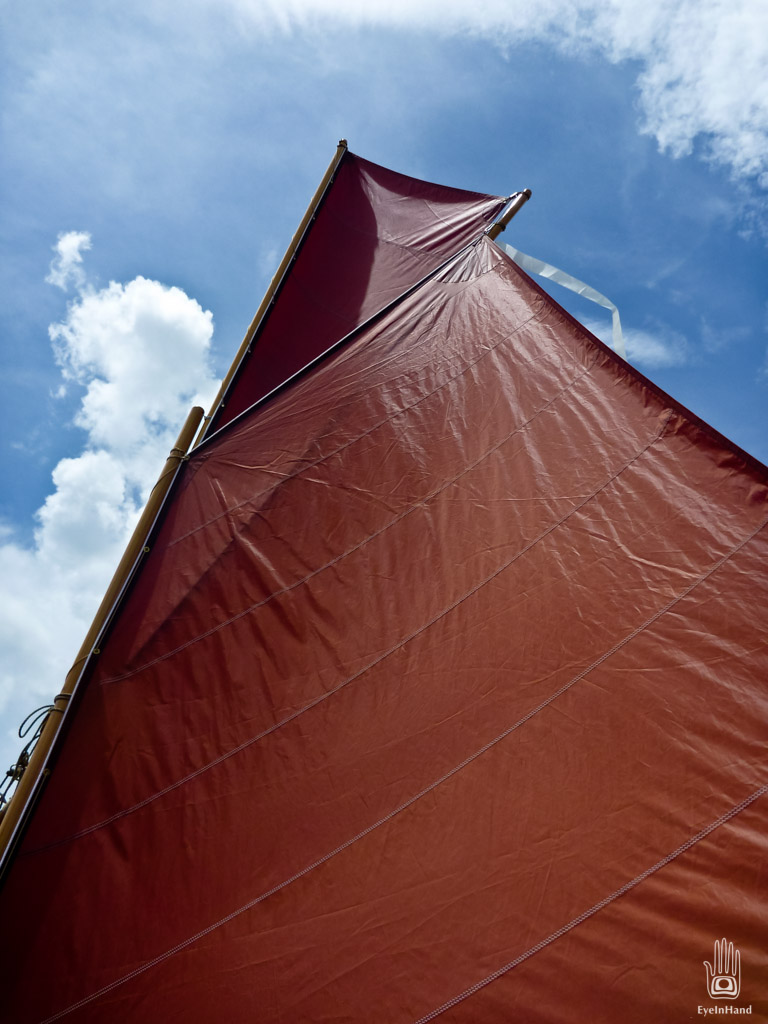


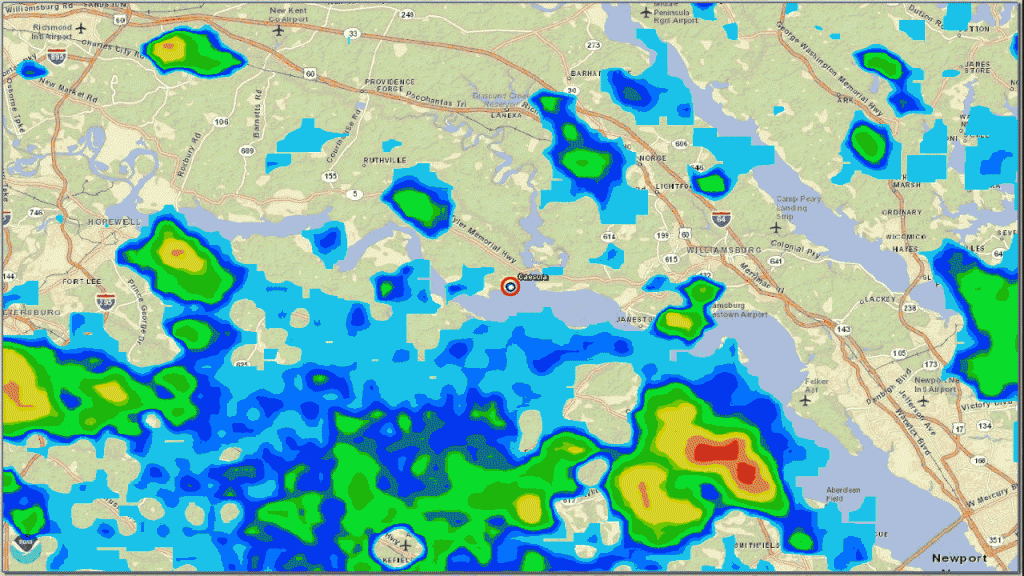
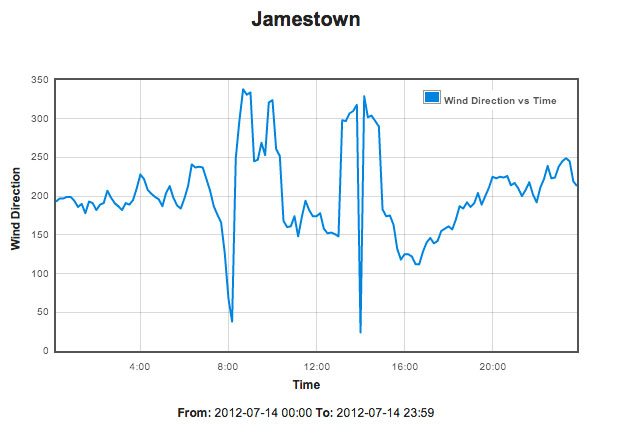
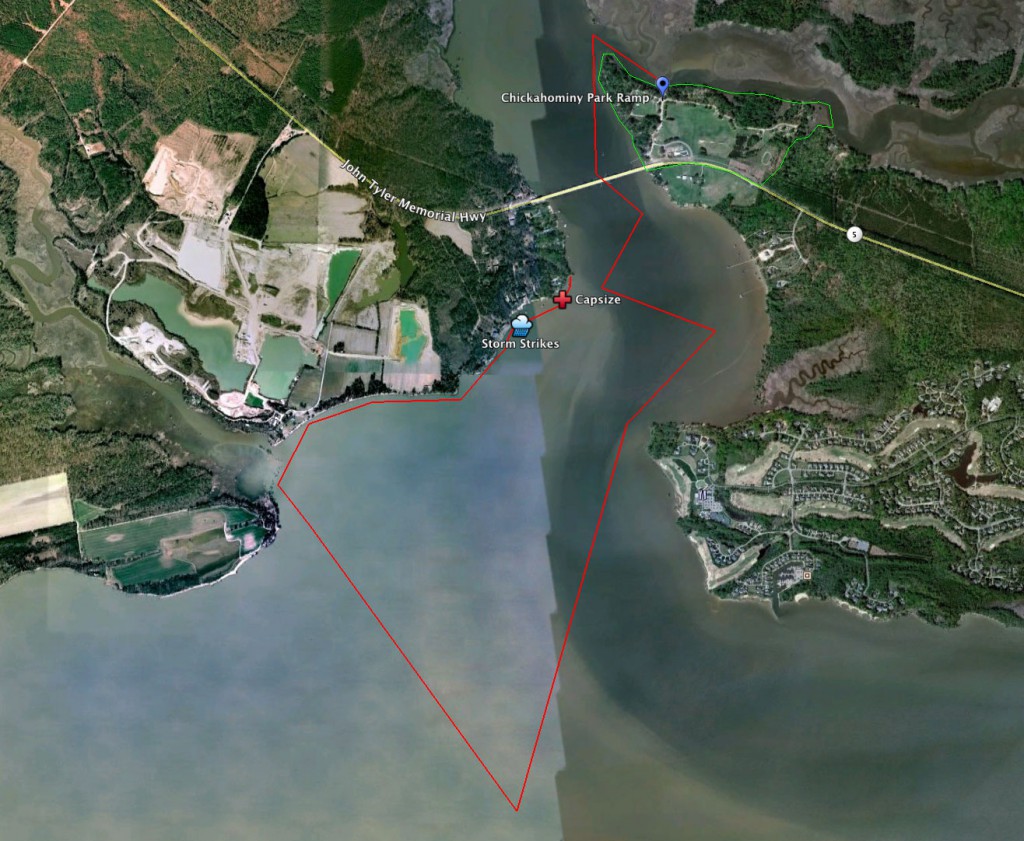
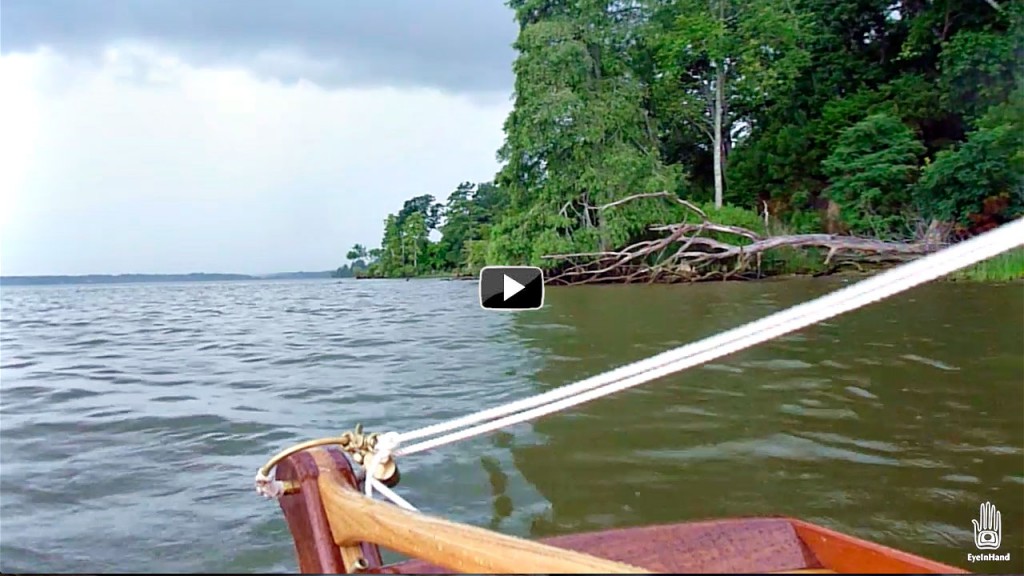
Thanks, Barry! Another interesting tale told beautifully. Glad it all shook out in the shallows. BTW, I have complete and total tops’l envy.
Gybe Ho!
RJR
This was GREAT! I feel like I was the third passenger, and what a great testament to the seaworthiness of your boat.
Thanks, it is rather well rooted in my memory, to say the least.
I should really take some photos with rigging details and such of the tops’ls. Several folks have asked how they’re set up. They are a pretty nice addition, and another arrow in the quiver. Though obviously, not for every occasion, they do let you take advantage of those days when there’s very little wind, making it a bit more interesting than it would be otherwise.
I’ve never read a more complete telling of a capsize. I’m recalling many of the momentary sailboat “accidents” I’ve foisted on myself and others that only with hindsight are funny now. Wonderful read. Sounds like the boat still didn’t disappoint. Not her fault.
Great tale-
Eddie
Well, if you can’t be good, be thorough, I always sez. 😉
Hey Barry, I thought that kind of stuff only happened to me!!!
I would say I learned from the master; but alas, this gift predates my connection with you, Paul. Your mojo is all your own. Perhaps we should take note, however, and avoid setting foot on the same boat, just to play it safe?